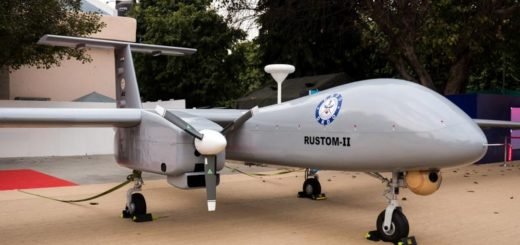An Assessment of the US maritime Power

History
Seapower has been the ultimate measure of global reach and influence since the Greeks stemmed Persia’s land conquests with a naval victory at Salamis Bay in 480 B.C. Despite having the largest and best-trained army in Europe in the mid-1700s, France lost its overseas empire, including Canada, to Great Britain because France could not support its colonies via the seas. Great Britain held onto a worldwide empire where the “sun never set” throughout the nineteenth century only because of the superiority of the Royal Navy.
By 1898, the United States was flexing its muscles on two oceans. New innovations in iron and steel battleships produced an arms race in dreadnoughts that were capable of ever-increasing speed, range, and firepower.
After this war to end all wars, idealists from the major powers convened in Washington, D.C. in November 1921 for the Washington Naval Conference. The results were limits on naval tonnage and capital ship construction. If navies were kept small, the argument ran, there could be no great clash of arms. Japan, a nominal member of the World War I victors, was only too glad to accept levels below those of Great Britain and the United States, because while these latter countries respected the limits for the better part of fifteen years, Japan ignored them and surged toward parity in naval might.
Only Franklin D. Roosevelt’s slow buildup of the American navy during the late 1930s kept Japan from surpassing American naval strength. As devastating as the surprise attack on Pearl Harbor was, the American navy had already begun to embrace aircraft carriers and naval aviation—instead of battleships—as the new weapons of naval superiority. Japan’s attacks throughout the Pacific in December 1941 were evidence of the effectiveness of these weapons, but the Americans would soon prove it in spades.
In May 1942, just five months after Pearl Harbor, Allied naval forces led by the American carriers Lexington and Yorktown engaged in the first sea battle fought exclusively between aircraft and blunted the Japanese advance at the battle of Coral Sea. The action protected the critical West Coast-to-Australia lifelines and arguably saved Australia from invasion. Less than a month later, American pilots from three carriers near Midway sank four Japanese carriers that Japanese shipyards could not readily replace. The United States on the other hand not only replaced the Lexington, sunk at the Coral Sea, and Yorktown’s loss at Midway but also launched twenty-one other fast carriers over the next three years.

By the time Fleet Admiral Chester W. Nimitz signed the Japanese surrender for the United States aboard the battleship Missouri in Tokyo Bay in 1945, the United States was the undisputed naval power in the world. Its opponents had been crushed and its allies weakened by the demands of victory. Only the United States had been able to flex its industrial muscle and float new ship construction that net of battle losses included the fast carriers, 70 escort carriers, 35 cruisers, 206 destroyers, 361 destroyer escorts, and 120 submarines—most built during a three-year period. Today, the entire American fleet has only 286 ships, about half the number of the Reagan Administration’s build-up of the late 1980s.
After World War II, land-based airpower became both an essential cold war capability and a deterrent. Yet it has consistently been sea power, frequently delivered by aircraft carriers, that has maintained America’s political and economic leadership. The United States Navy has quarantined Cuba during the missile crisis, kept the Strait of Hormuz and other vital waterways open, and dispatched American aid around the globe in response to military crises and for humanitarian efforts.
How long American naval superiority will last is uncertain, but as to whether or not it matters, history shows the answer to be a resounding “yes.” China holds approximately $1.2 trillion of United States debt. In a global economy of friendly competition, many view this a matter of course. But what if China used twelve billion dollars of this debt—1% —to deploy an aircraft carrier operating off each coast of the United States? The dynamics suddenly change. Whether the threat comes from another country or from machine-gun-toting pirates or suicide terrorists, the international economy requires naval power.
Those who say that threats have diminished do not understand history. With 70% of the globe covered by water, the country that wields naval power most effectively has always maintained a position of political and economic leadership. The dominance of the United States Navy must be maintained if America is serious about continuing its role as a global leader in the twenty-first century. There is no substitute for sea power and history has proven that if the United States doesn’t do exercise it, some other nation will.
In 2015, the US Navy, Coast Guard and Marine Corps released a revised maritime strategy titled ‘A Cooperative Strategy for 21st Century Seapower’, calling for all domain access, US forward naval presence and emphasising cooperation between the US and its allies in the face of various global maritime challenges. To face this perplexing 21st-century threat environment, the strategy focuses on two foundational principles. First, forward naval presence is deemed essential to defend the homeland, deter conflict, respond to crises, defeat aggression, protect maritime commons, strengthen partnerships, and provide humanitarian assistance and disaster response. Second, the strategy emphasises joint operations with allies and partners. (1)

In the aftermath of the terrorist attacks on 11 September 2001, the US Customs Service created the Container Security Initiative (CSI), which addresses the threat to border security and global trade posed by the potential threat of terrorists using maritime containers to deliver weapons. CSI proposes a security regime to ensure all containers that pose potential terrorism risks are identified and inspected at foreign ports before they are placed on vessels destined for the US. The three core elements of the CSI are:
- Identify high-risk containers based on automated targeting tools to identify containers that pose a potential risk for terrorism, based on advance information and strategic intelligence.
- Pre-screen and evaluate containers before they are shipped as early in the supply chain as possible, generally at the port of departure.
- Use technology to pre-screen high-risk containers to ensure that screening can be done rapidly without slowing down the movement of trade. This technology includes largescale X-ray and gamma-ray machines and radiation detection devices.(2)

The United States Navy
With around 290 ships in recent years, the U.S. Navy is not the largest in the world, but it’s the most powerful. The United States has eleven aircraft carriers, the largest military vessels in the world, while China and Russia each have only one. However, such numerical comparisons are of limited value, and defence analysts caution that the yardstick should be whether the navy, as well as other services, are equipped to fulfil the country’s security and foreign policy objectives.
A rationale for U.S. forces in recent decades has been defending against the rise of adversaries that could deny the United States access to important allies and markets in Europe and Asia. “The traditional U.S. goal of preventing the emergence of a regional hegemon in one part of Eurasia or another has been a major reason why the U.S. military is structured with force elements that enable it to cross broad expanses of ocean and air space and then conduct sustained, large-scale military operations upon arrival,”.(3)
Takeaways for Indian Navy
Whenever it comes to Maritime Border Management, we know that the USA is superior than India because of better technology. The USA had been affected by drug trafficking through maritime borders. The USA has more advance weapon to tackle terrorist activities on the maritime border. They have more strict immigration laws regarding illegal migration of the maritime border. They are much more advanced in securing their ports through smart technology which is beneficial in securing their maritime borders. India has to take a lot of efforts in minimising its maritime security threats. India requires smart technology for a regular check on illegal activities on its maritime border. For that,
India needs a strong system regarding the maritime border management system like the USA. No other Nation is in the comparison with the USA when it comes to maritime power. It will be very helpful for India if India takes lessons from the USA.
References
- https://nation.time.com/2012/05/16/historys-lesson-sea-power-defines-a-nation/
- https://www.pwc.in/publications/2016/smart-border-management-an-indian-perspective.html
- a recent report on the U.S. Navy by the Congressional Research Service i.e. (Navy Force Structure and Shipbuilding Plans: Background and Issues for Congress)


















